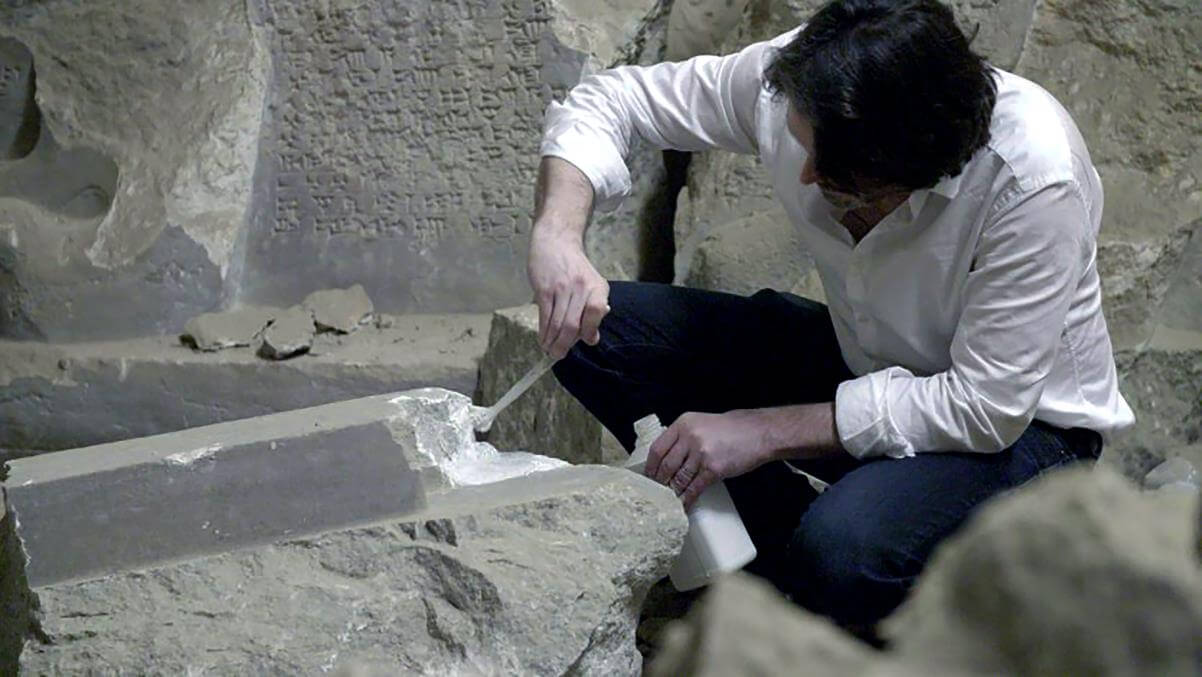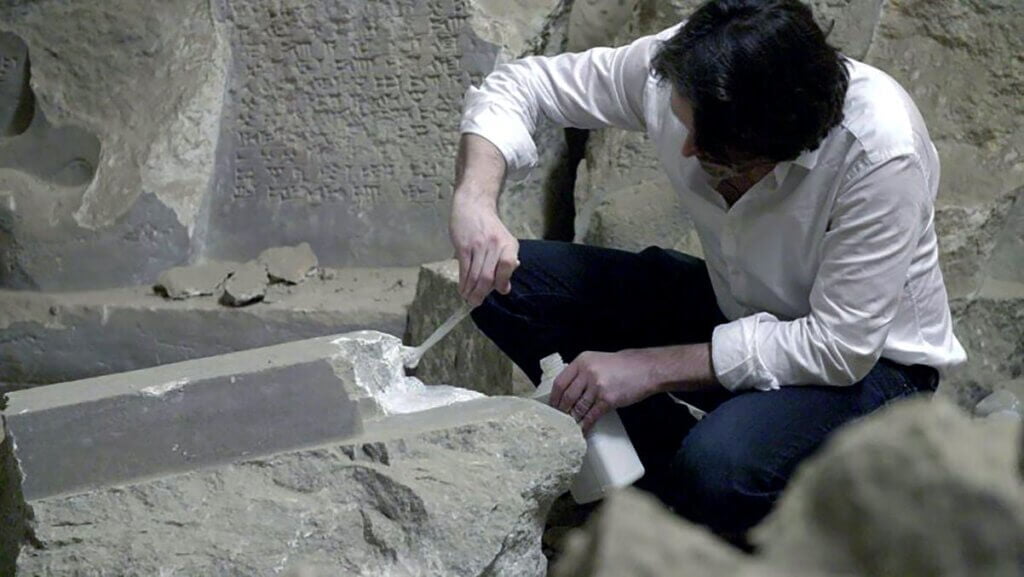Featuring new installation by artist Piers Secunda – now part of the Ashmolean Museum’s permanent collection
Iraq’s colonial origins explored in Ashmolean exhibition
Owning the Past: from Mesopotamia to Iraq is an exhibition at the Ashmolean Museum that explores cultural identity and place. Developed through a unique partnership with Oxford residents from the Middle East, the exhibition critically examines the role Oxford University played during the early 20th Century in the formation of the nation state of Iraq, previously Mesopotamia, and the importance of the remains of the ancient past in modern cultural identities. Using a selection of objects, maps and diaries featured in the exhibition, local residents from the Middle East reflect on the colonial legacy that continues to have an impact today. For the first time at the Ashmolean the entire exhibition is presented in two languages – English and Arabic.
Owning the Past looks at the creation of Iraq’s geographic borders and the impact it had on its communities. The exhibition is inspired by recent attempts by ISIS/Daesh to erase these borders and, with it, the identities of its people and their histories.
The exhibition also features a commissioned installation by the artist Piers Secunda (b.1976), whose work examines some of the most significant subjects of our time – including the deliberate destruction of culture. His powerful artwork was created by laser scanning and 3D printing a reproduction of the Assyrian relief of a bird-headed spirit that had been removed from the site of Nimrud in the mid-nineteenth century and is now in the Ashmolean. Secunda casts the pieces in the installation in industrial floor paint, with the broken stone texture transferred from moulds, which the artist made from the sculptures smashed by ISIS/Da’esh in the Mosul Museum.
Using charcoal gathered from the partly burned Mosul Museum, Secunda also made ink by the traditional process of grinding the charcoal into a powder with a mortar and pestle, mixing it with alcohol and then Gum Arabic. He then used this ink to make drawings of the interior of the Mosul Museum, based on photographs, bringing burned remnants of the artefacts and the building back to life as new works of art. These drawings feature as part of the installation.
The exhibition specifically examines the period in the early 20th century, starting in 1914 when the outbreak of war saw British forces take control of Basra in Mesopotamia, to the creation of the Kingdom of Iraq in 1921, and then to 1932 when Iraq nominally gained independence from Britain. It took a decade of negotiation up to 1932 to determine where the borders of the new Kingdom should be drawn, as any line on a map inevitably meant separating communities or including some within new states while denying others. The result was people’s individual and group identities were challenged, disrupted and even erased, while others found new identities, aligned with the nation state.
In this period throughout the 1920s and early 1930s, the Kingdom of Iraq (guided by the British) allowed major excavations to take place. This resulted in the removal of thousands of antiquities from Iraq to museums around the world.
The Ashmolean Museum is in a unique position to explore the legacy of this period as it holds hundreds of objects from the region, some which feature in the exhibition, including figurines, vases and other decorative and domestic items. The museum also holds items that First World War soldiers brought back to Britain – a Sumerian statue (dating to about 2500 BC) uncovered by Indian soldiers of the British army digging trenches at Istabalat beside the river Tigris in April 1917. The statue was brought back to Britain and donated to the Ashmolean by the regiment’s commanding officer.
Oxford University also had a particularly critical part to play in this story, and this difficult past is a major narrative of this exhibition. In the 1920s the University, together with the Field Museum (Chicago) led large-scale excavations at Kish. Some of the objects displayed in the exhibition are among the thousands that were part of Oxford’s share of the division of finds from these excavations. Finally, many Oxford University staff and alumni have had a significant influence in this period: in Iraq, where they were instrumental in the creation of the borders, and in Oxford where they were instrumental in the formation of the University’s ancient Middle East collection.
To explore this colonial legacy and its impact on local people, the museum has worked closely with Oxford residents from the Middle East to include their thoughts about who owns their heritage and who tells their histories.
The Ashmolean’s exhibition team included two paid Community Ambassadors, who engaged directly with friends, colleagues and communities, coordinating a series of workshops on identity, heritage and histories. Often the perspectives of communities are not visible in displays devoted to the very histories and heritage of their homeland, but in Owning the Past community voices are woven through the narrative of the exhibition. This exhibition would not have been possible without the support and assistance of these local people.
The input from community participants reveals the complexity of thoughts and emotions around the impact that a century of nation building, invasion, occupation and displacement has had on their lives and identities. As one contributor stated, ‘Personally, going to museums and seeing the way in which Mesopotamia is taught and represented – it is told as a universal history but people are still dying there. The countries we fled to are still responsible.’
Owning the Past: from Mesopotamia to Iraq is an opportunity to highlight the long-lasting impact of the past on the present, explore what is meant by heritage, and to enable the voices and stories of people not previously visible in displays.
The exhibition is supported by: The van Houten Fund, Al Tajir Trust, The British Institute for the Study of Iraq (Gertrude Bell Memorial), and supporters who wish to remain anonymous.
“We are proud to present this exhibition which explores this particularly difficult period in Iraq and Oxford’s linked history. We are grateful to the local participants who dedicated their time and shared their thoughts and experiences, allowing us to present such an insightful and personal display. Through this and Secunda’s work, the exhibition shows the significant legacy of this pivotal time that still resonates more than a century on and across generations.”
– Dr. Xa Sturgis, Director of the Ashmolean Museum
©2021 Piers Secunda






